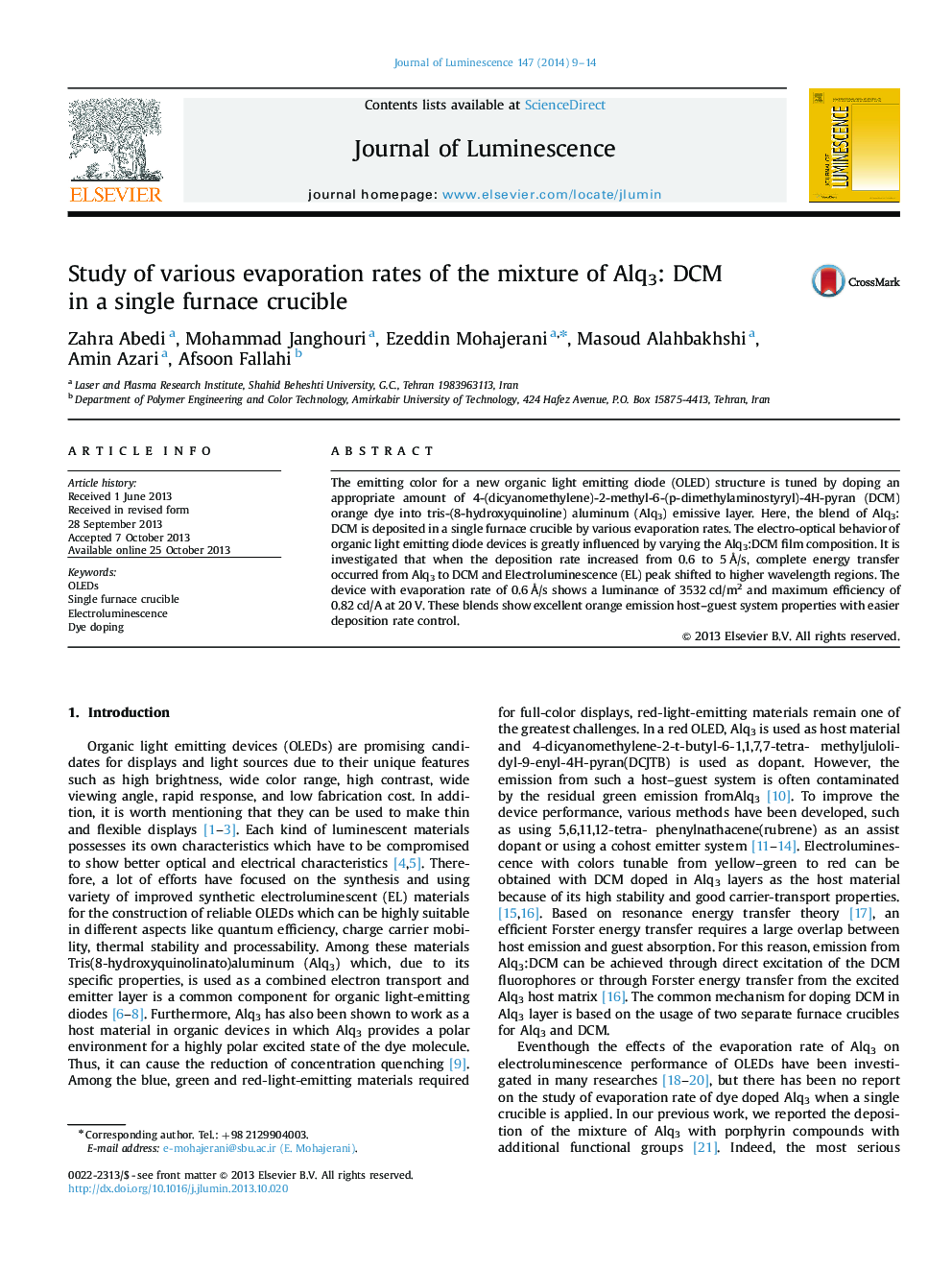| Article ID | Journal | Published Year | Pages | File Type |
|---|---|---|---|---|
| 5400018 | Journal of Luminescence | 2014 | 6 Pages |
Abstract
The emitting color for a new organic light emitting diode (OLED) structure is tuned by doping an appropriate amount of 4-(dicyanomethylene)-2-methyl-6-(p-dimethylaminostyryl)-4H-pyran (DCM) orange dye into tris-(8-hydroxyquinoline) aluminum (Alq3) emissive layer. Here, the blend of Alq3:DCM is deposited in a single furnace crucible by various evaporation rates. The electro-optical behavior of organic light emitting diode devices is greatly influenced by varying the Alq3:DCM film composition. It is investigated that when the deposition rate increased from 0.6 to 5Â Ã
/s, complete energy transfer occurred from Alq3 to DCM and Electroluminescence (EL) peak shifted to higher wavelength regions. The device with evaporation rate of 0.6Â Ã
/s shows a luminance of 3532Â cd/m2 and maximum efficiency of 0.82Â cd/A at 20Â V. These blends show excellent orange emission host-guest system properties with easier deposition rate control.
Keywords
Related Topics
Physical Sciences and Engineering
Chemistry
Physical and Theoretical Chemistry
Authors
Zahra Abedi, Mohammad Janghouri, Ezeddin Mohajerani, Masoud Alahbakhshi, Amin Azari, Afsoon Fallahi,
